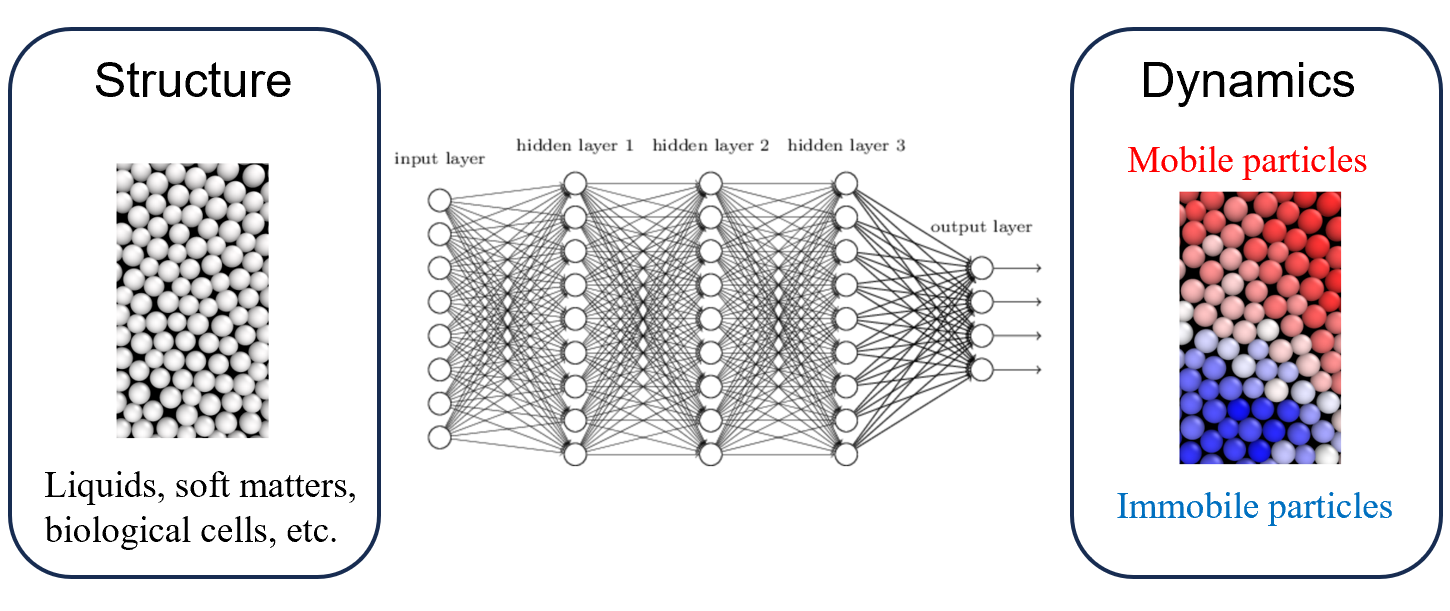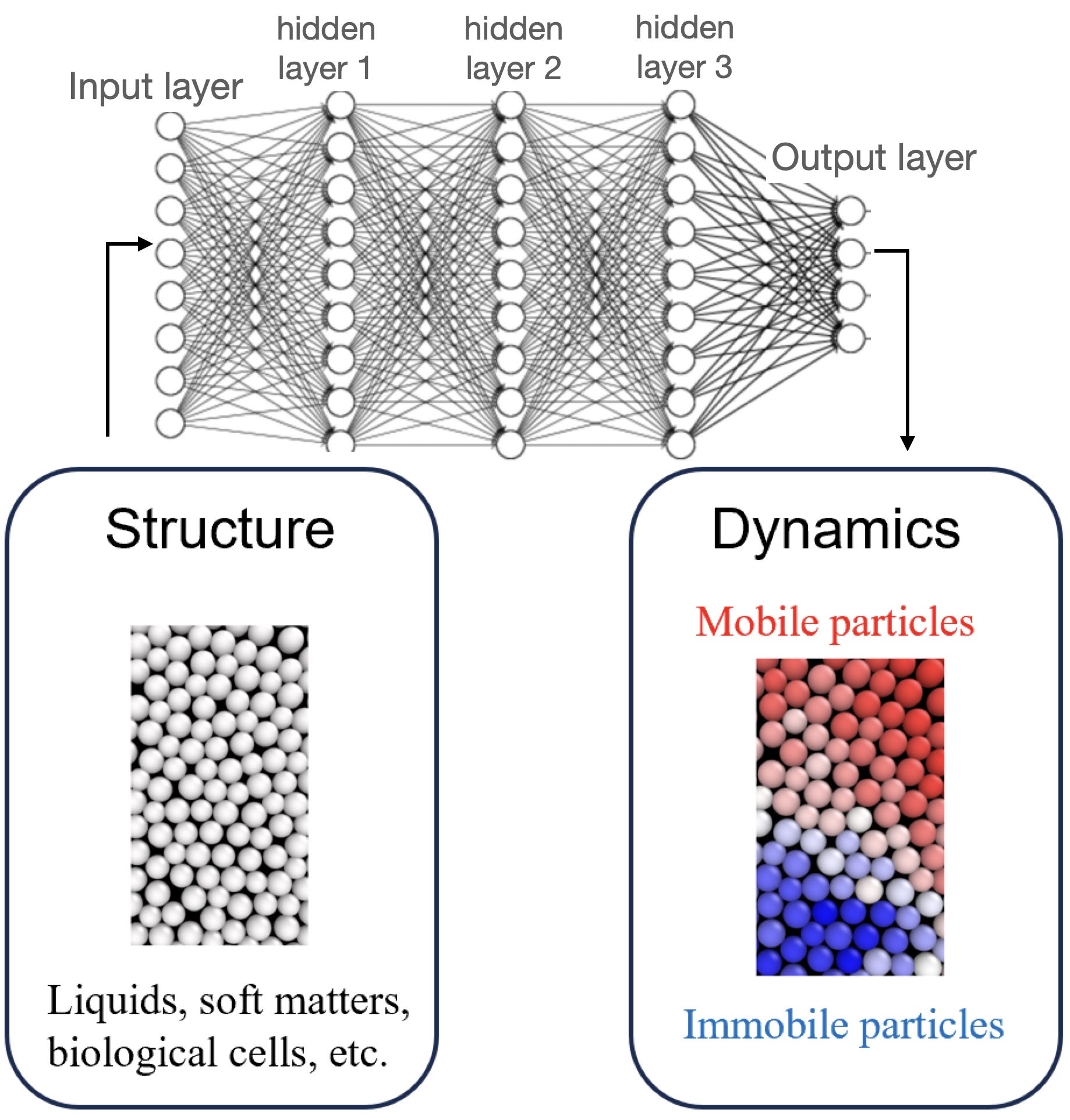 Overview
Overview
The dynamics of soft and biological systems, including colloids, biological tissues, foams, active matter, and granular materials, exhibit fascinating and complex behaviors such as heterogeneous and avalanche-like dynamics. These amorphous systems, distinct from ordered crystalline materials, pose a significant challenge in prediction due to their inherently disordered structures. This project aims to harness machine learning technology to unveil hidden characteristic features within these systems and predict their dynamic behaviors effectively.
Project details
• Initial Phase: Focus on understanding and analyzing simple systems and computer-simulated liquids, utilizing them as foundational examples.
• Techniques Applied: Employ a blend of machine learning methodologies, including both supervised (e.g., linear regression) and unsupervised learning techniques (e.g., principal component analysis, autoencoder).
• Advanced Phase: Upon mastering simple systems, the project will expand to more intricate systems, such as active matter and biological systems, through both simulated and experimental data.
Ideal Candidate
Skills required:
◦ Strong interest in coding, with proficiency in Python (or C) preferred.
◦ Solid background in statistical physics.
Desirable qualities:
◦ Curiosity and enthusiasm for studying complex, dynamic systems.
◦ Eagerness to learn; previous experience in machine learning and data science is advantageous but not required, as on-the-job training will be provided.
What You Will Gain
• Hands-on experience in applying machine learning techniques to real-world physical systems.
• Opportunity to contribute to cutting-edge research in the dynamics of soft and biological systems.
• On-the-job training in machine learning and data science, directly applicable to a wide range of scientific problems.
Reference
Jung, Gerhard, et al. "Roadmap on machine learning glassy liquids." arXiv preprint arXiv:2311.14752 (2023).

